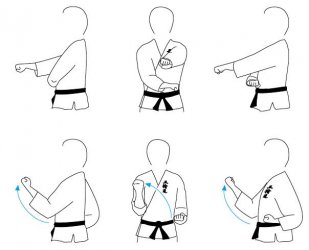Originally Posted by dancingalone
I think the point of contention is if the creators of the forms in question say there is no intended applications in the karate bunkai sense, why go on about it?
I'm kind of thinking it would be like an instructor giving you something you never saw before and telling you it's a "Door Stop" to use it to keep hold the door open. Put it on the floor in front of the door and it keeps the door from closing. It is a "Door Stop" and it works to hold the door open. As far as you know that's what it is. When your instructor moves on you take over the school and the door stop. You have yopur students use it accordingly. One day a stranger from a strange land appears, and while you are using a rock to try and pound in a nail, he picks up the door stop, and efficiently drives in the nail because he recognized the door stop to be a hammer. Now, if the instructor never knew what a hammer was and didn't recognize tis thing as a hammer and did not know how to use it, does that mean it's not a hammer?
The above should not be seen as a slam on the instructor. Perhaps the most efficient way to teach movements to large numbers is though a stated application that helps understand the concept. The downside is a sort of tunnel vision and stifling of learning if you accepot that as the end f the story.
Yes, exactly. Funny you use the hammer anology as in my first book I used the quote; "If all you have is a hammer, everything looks like a nail" to make the exact same point!
Stuart

